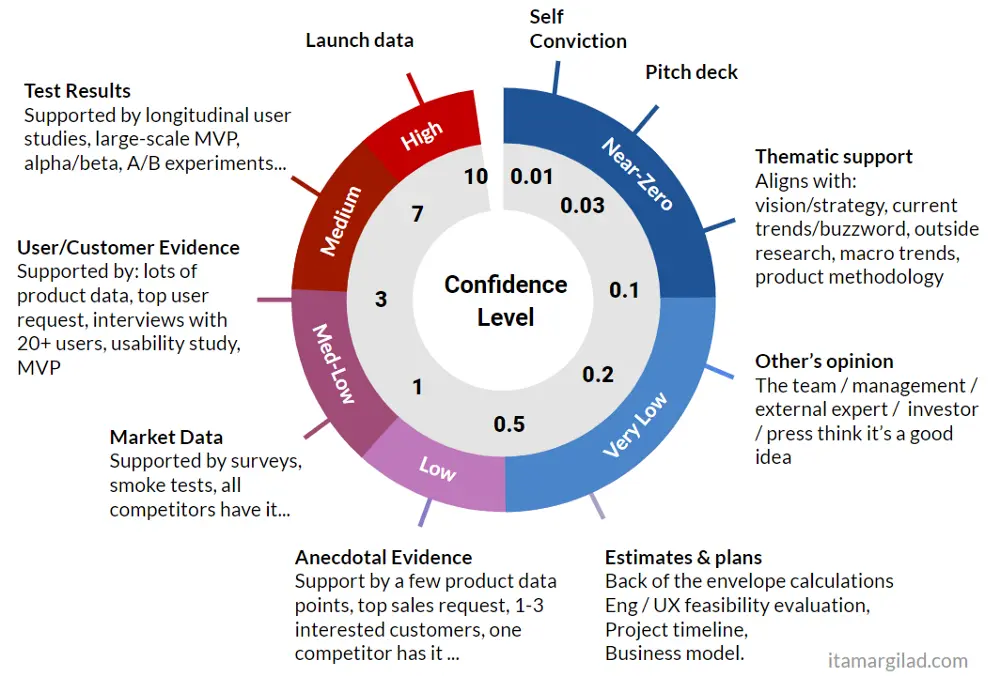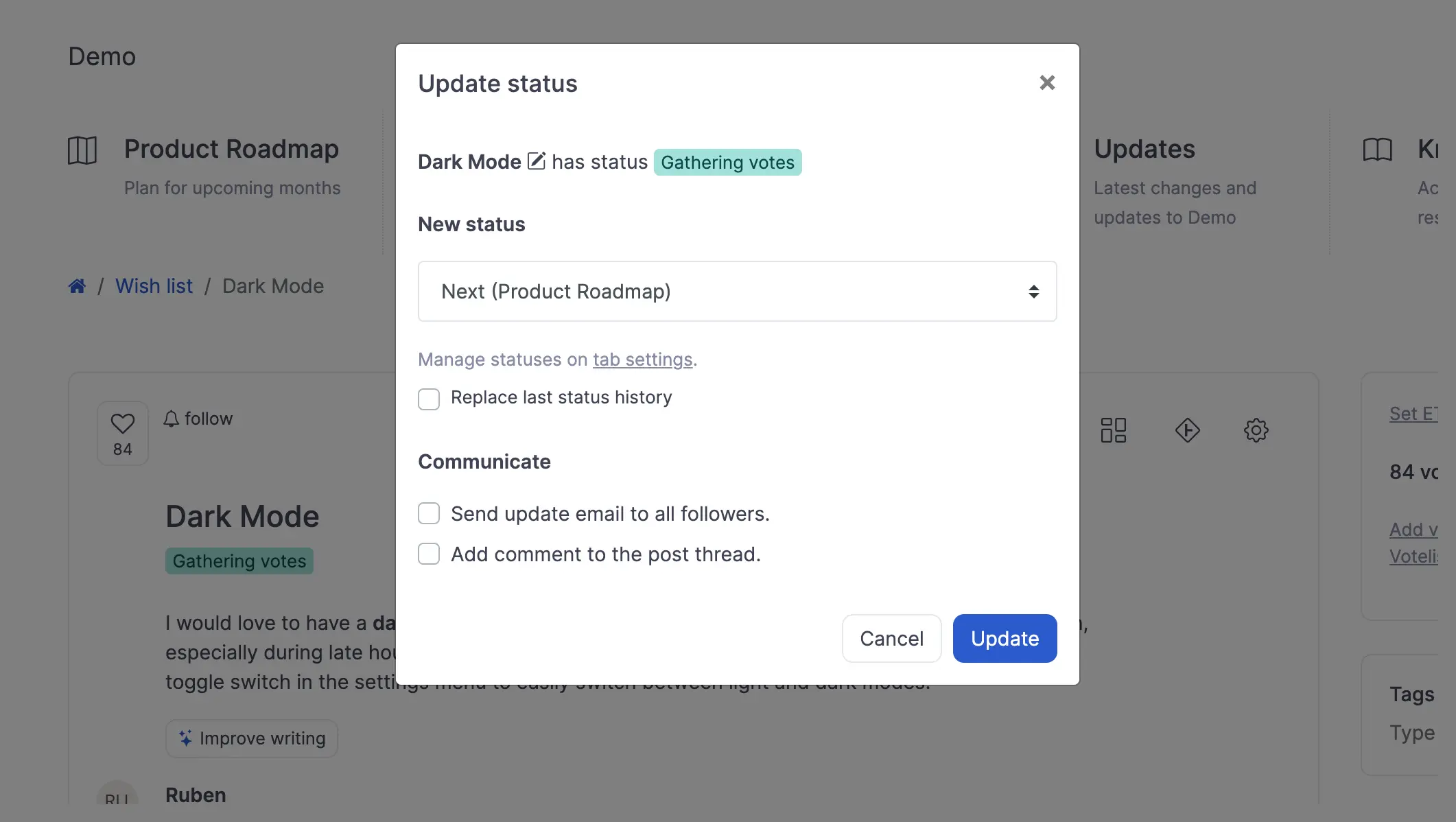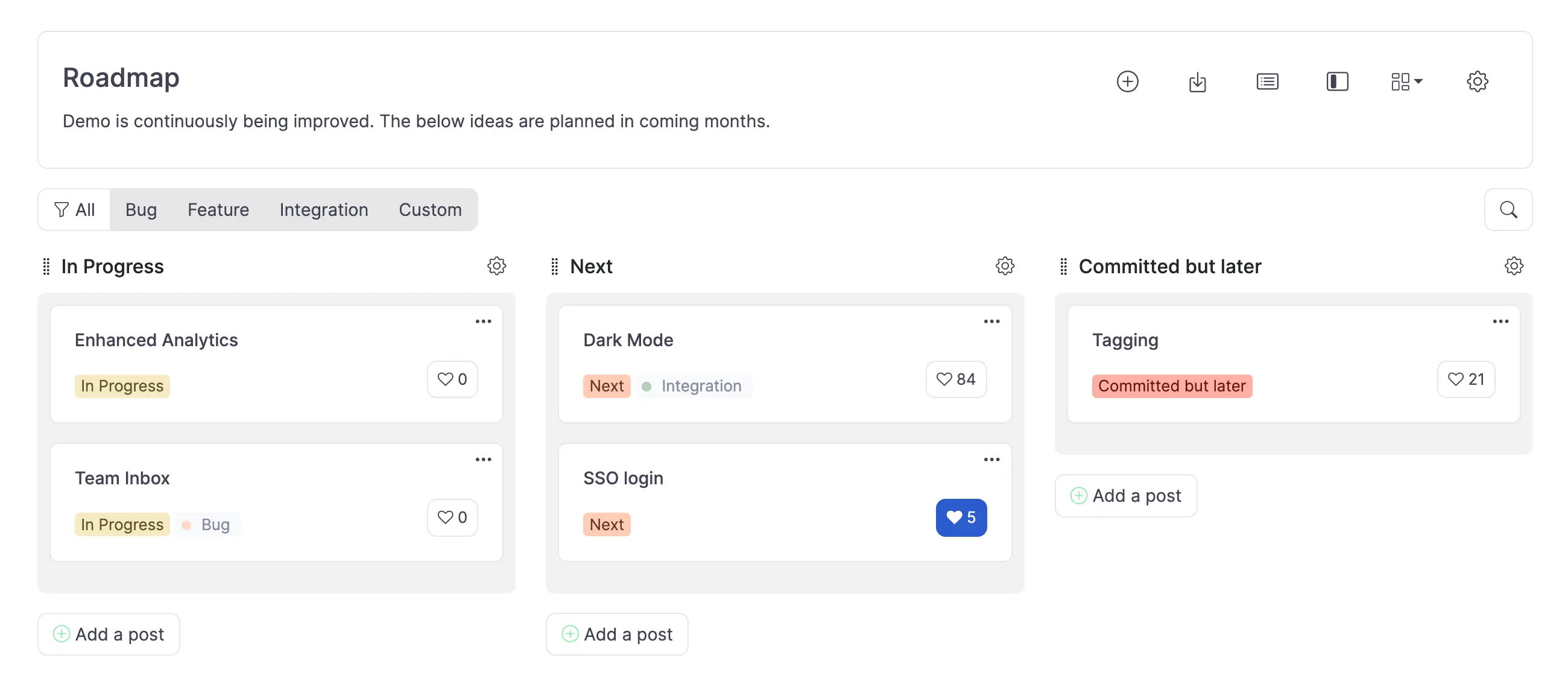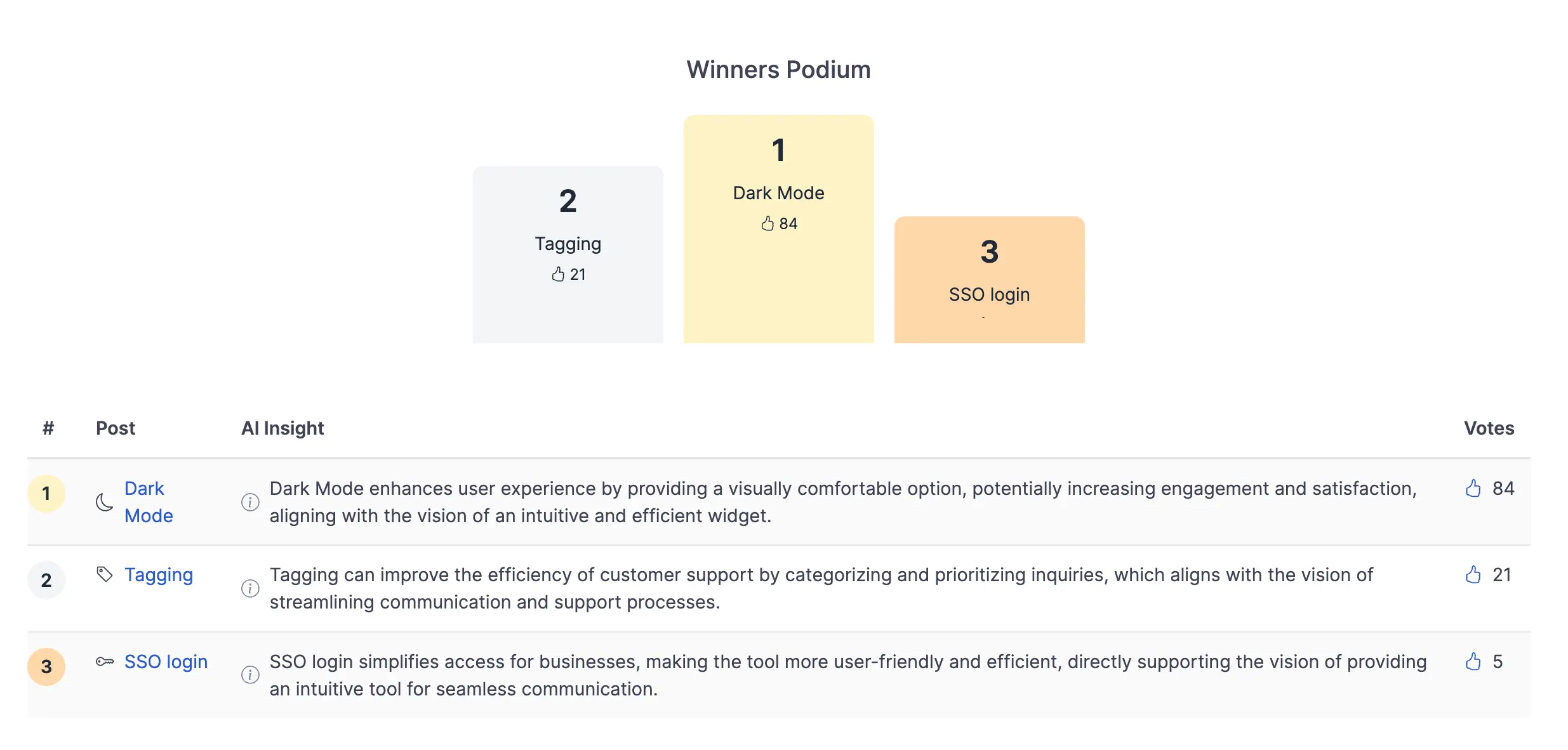ICE Scoring Model: Overview, How it Works, Examples

Ruben Buijs
Updated on Nov 19, 2025
Prioritization is super important in product management. You can only spend your time once, so you need to make sure you're doing the right things.
In my 10 years of consulting at Accenture and Ernst & Young, I've seen a lot of companies struggle with this.
Often, product managers prioritize based on gut feeling or who shouts the loudest (usually the boss).
But that's not the best way to do business. You want a more objective way to set priorities.
There are several prioritization frameworks that can help you with this.
I'll walk you through the ICE scoring model, sharing my tips and tricks along the way.
Table of contents
- What is the ICE Scoring Model?
- Components of ICE
- The ICE Prioritization Process
- ICE in Action: Real-World Examples
- ICE Prioritization with AI
- Benefits and Drawbacks of ICE
- ICE vs. RICE: Which is Better?
- Do's and dont's of ICE
- Conclusion
What is the ICE Scoring Model?
The ICE model is a framework that prioritizes ideas or projects based on their Impact, Confidence, and Ease.
Sean Ellis, famous for coining the term "growth hacking", invented this prioritization model.
The ICE framework helps you make a "good enough" guess at priority. It's not perfect, but it helps you figure out which features are awesome and which ones you should probably skip.
ICE stands for three factors:
-
Impact – How much does this help us reach our goals?
-
Confidence – How sure are we that this will actually work?
-
Ease – How hard is it to make this happen?
The ICE score formula:
ICE Score = Impact x Confidence x Ease
It's like the classic impact/effort analysis, but with confidence thrown in for good measure.
Let's break down each component and then we'll walk through the process of using ICE for prioritization.
Components of ICE
Impact
Impact measures how much a feature contributes to your goals. Before scoring impact, ensure your goals are clearly defined. A great tool for this is the Product Vision Board, which helps you articulate your vision, target group, needs, product, and business goals.
When scoring impact, use a 1-10 scale. Here's an example scale:
| Impact Description | Score |
|---|---|
| Transformative - Game-changing for the product | 10 |
| Very High - Significant improvement for many users | 8-9 |
| High - Notable improvement for some users | 6-7 |
| Medium - Moderate improvement for a few users | 4-5 |
| Low - Minor improvement for a small number of users | 2-3 |
| Very Low - Barely noticeable improvement | 1 |
Examples
-
Feature A: Add dark mode (Impact score: 6) - This will improve user experience for some users, but it's not transformative.
-
Feature B: Implement AI-powered recommendations (Impact score: 9) - This could significantly increase user engagement and retention.
Confidence
Confidence helps distinguish between data-backed ideas and mere opinions. It's crucial to involve your team when determining confidence scores, as different perspectives can reveal potential concerns.
Here's a scale you can use for Confidence:
(Source: Itamar Gilad)
Example
-
Feature E: Fix a minor UI bug (Ease score: 9) - This is a quick fix that can be done in a day.
-
Feature F: Integrate a new payment gateway (Ease score: 3) - This requires significant backend work and testing.
Ease
Ease is all about how hard it is to implement something. Think of this as the traditional effort factor. How long will it take to build?
Here's an example scale for Ease:
| Person weeks | Ease |
|---|---|
| < 1 week | 10 |
| 1-2 weeks | 9 |
| 2-3 weeks | 8 |
| 4-5 weeks | 7 |
| 6-7 weeks | 6 |
| 8-9 weeks | 5 |
| 10-12 weeks | 4 |
| 13-16 weeks | 3 |
| 17-25 weeks | 2 |
| > 26 weeks | 1 |
(Source: Itamar Gilad)
Examples
-
Feature E: Fix a minor UI bug (Ease score: 9) - This is a quick fix that can be done in a day.
-
Feature F: Integrate a new payment gateway (Ease score: 3) - This requires significant backend work and testing.
The ICE Prioritization Process
Now that we understand the components, let's walk through the process of using ICE for prioritization.
1. List features, enablers, regulatory items
First things first, make a list of all the tasks and features you're thinking about.
Try to keep things MECE (Mutually Exclusive, Collectively Exhaustive). This means your items should not overlap (mutually exclusive) and should cover all possibilities (collectively exhaustive).
For example, "SSO login" and "Tagging" are on the same level and don't overlap. But "Change button color" and "Build a whole new app" are definitely not on the same level.
Take your time to make a good list. It's a pain when you're halfway through prioritizing and someone throws in a new idea. I usually ask customers, partners, and coworkers for their input using surveys or a feedback tool.
Let's add the list in the Score-based Prioritization module:
2. Score each component
Now, go through your list and score each item on Impact, Confidence, and Ease using the scales we discussed earlier.
In our ICE prioritization tool, we make decisions based on how many votes a feature gets. We also look at conversion, which is likes divided by views. Even though the SSO login feature has fewer votes, it has the highest conversion rate, showing it's important.
3. Calculate scores
Now it's time to do some math! The ICE score calculation is simple:
Priority = Impact x Confidence x Ease
After entering all the data, the tool automatically calculates the ICE score. You can also use this online ICE score calulator.
With the ICE scores calculated, we can reorder the list to view features from highest to lowest priority. This helps in identifying which features should be addressed first.
4. Review with team and stakeholders
After calculating the scores, it's important to review the results with your team and key stakeholders. This step helps catch any oversights and ensures everyone is aligned on the priorities.
5. Finalize and make roadmap
Finally, with all the data entered, we can use this input to determine the roadmap.
We review each item on the list. In ProductLift, we can change the status of the items we have reviewed. This step immediatly updates users that votes for the feature request.
As we update the statuses of the items, they are automatically added to our roadmap. This ensures that our roadmap is always up-to-date with the latest priorities and statuses.
ICE in Action: Real-World Examples
Many successful companies have used ICE to drive their product development. Here are a couple of examples:
Airbnb used the ICE product management to choose which features to build that would make people trust their platform more and book more easily. By focusing on the ideas that scored highest, they made their website easier to use and got more hosts and guests to join.
Dropbox used ICE to figure out which features would make people use their app more often and stick around longer. By building the high-scoring features first, Dropbox grew really fast and became super successful.
ICE Prioritization with AI
While the ICE framework is a powerful tool, it can be time-consuming to implement manually, especially for a large number of features. This is where AI-powered prioritization can come in handy.
The AI prioritization feature helps us decide which features to focus on in 30 seconds.
We start by setting up our product vision and adding features we want to consider. As users vote on their favorites, the AI analyzes this data and our vision to find the top 5 features.
Benefits and Drawbacks of ICE
Benefits:
-
It helps you avoid making decisions based on gut feeling or emotions.
-
It focuses your time and resources on the most impactful tasks or features.
-
It aligns your work with your business goals.
-
It improves communication and collaboration in your team by providing a standard way to evaluate ideas.
Drawbacks:
-
The factors can be subjective. Who decides what's a 1 or a 2?
-
All elements of the score are treated equally. One low factor can really drag down the score.
-
Scores can change over time. You'll need to regularly review and update your factors.
ICE vs. RICE: Which is Better?
RICE is another popular prioritization framework that stands for Reach, Impact, Confidence, and Effort. The main difference is the addition of the Reach factor, which considers how many people the feature will affect in a given time period.
So which is better? It depends on your needs:
-
The ICE method is simpler and faster to use, making it great for quick decisions or when you don't have detailed user data.
-
RICE is more comprehensive and can be more accurate, especially for consumer products where reach is a critical factor.
In general, if you're just starting out or need to make quick decisions, ICE is a great choice. As your product matures and you have more data about your users, you might want to consider switching to RICE prioritization for more nuanced version.
Do's and dont's of ICE
The ICE prioritisation framework can be a powerful tool for product managers, but it's important to use it properly. Here are some do's and don'ts to keep in mind when applying ICE:
Do:
-
Start by clearly defining your objectives and goals.
-
Involve the right stakeholders in the prioritization process.
-
Use the ICE score to prioritize features or ideas, but also consider other factors such as resources, technical feasibility, and market demand.
-
Revisit and update your ICE priority regularly as new information becomes available or priorities change.
-
Communicate your prioritization decisions transparently and explain the rationale behind them.
-
Use an ICE template and agree on scales across the team(s).
Don't:
-
Rely solely on the ICE methodology to make decisions. Use it as one of several inputs in your prioritization process.
-
Ignore feedback from users or other stakeholders just because a feature or idea scored low on the ICE scale.
-
Rush through the prioritization process without giving it enough time and attention.
-
Base your ICE scores solely on your own opinions or assumptions. Use data and insights from multiple sources to inform your scores.
-
Use ICE as a one-size-fits-all solution. Different projects or products may require different prioritization frameworks or approaches.
Frequently Asked Questions
What is the ICE model of prioritization?
The ICE model of prioritization is a framework used to evaluate and prioritize ideas or projects based on three factors: Impact, Confidence, and Ease. It helps teams focus on initiatives that will yield the most significant results with the least effort and highest confidence in success.
What is the ICE priority formula?
The ICE formula is calculated by multiplying the scores of Impact, Confidence, and Ease. The formula is:
ICE score = Impact x Confidence x Ease
Each factor is typically scored on a scale from 1 to 10, with higher scores indicating higher potential for success.
How to do ICE prioritization?
To perform ICE prioritization, start by listing all potential ideas or projects. For each, assign a score for Impact (how much it will positively affect the goal), Confidence (how certain you are that it will succeed), and Ease (how easy it is to implement). Multiply the three scores to get the ICE score. Rank your projects based on these scores, with higher-scoring projects taking priority.
What is the ICE approach?
The ICE approach is a simple yet effective method for prioritizing projects or initiatives by focusing on those that offer the best combination of high impact, confidence in success, and ease of execution. It helps streamline decision-making and focus resources on the most promising opportunities.
Conclusion
Prioritizing features is tough and takes time and discipline. The ICE prioritization framework helps you make a "good enough" estimate of priority. Now you have the tools to do this for your product.
Remember to revisit your ICE scores regularly, as your experience, goals, and confidence will change over time.
Finally, share your priority outcomes with your customers and stakeholders using your product roadmap or kanban board. This keeps everyone aligned and excited about what's coming next!















